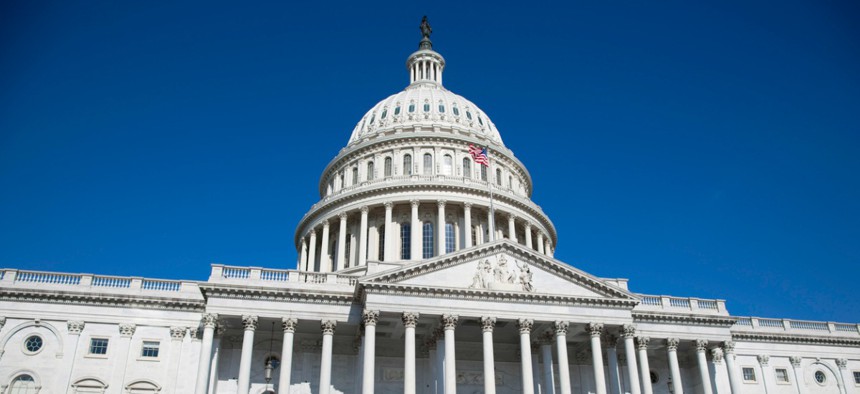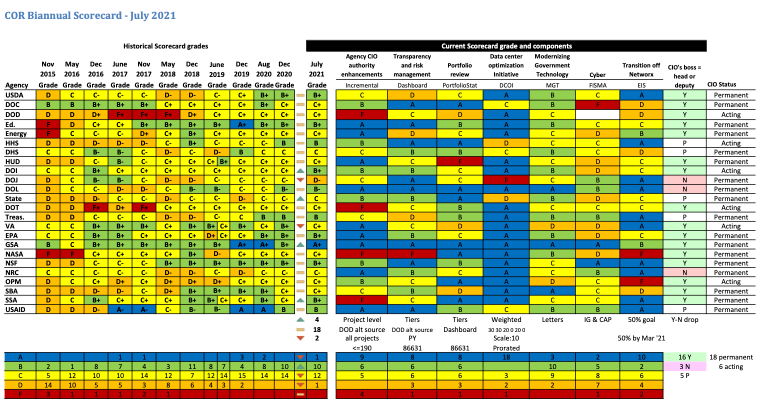One A, One D in a Relatively Static FITARA Scorecard

csundahl/iStock.com
Eighteen of 24 agencies received the same grade as in the previous FITARA scorecard.
Only one agency pulled off an overall A letter grade in the latest edition of the scorecard measuring agency progress in implementing the Federal Information Technology Acquisition Reform Act. Most agency grades remained similar to the last scorecard.
Two FITARA scorecards ago in the 10th edition, released in August 2020, all agencies received passing grades for the first time. Agencies repeated that milestone with the 11th scorecard, released in December 2020, even with some declining grades. But in scorecard 12, released Wednesday, one agency fell below the C-level. The Justice Department fell from a C- to a D- grade, while only the General Services Administration received an A grade.

Justice slipped in three categories: agency chief information officer authority enhancements, use of the Modernizing Government Technology Act, and the data center center optimization initiative categories. Justice has never scored above a B-, a mark it last hit in 2017. The data center grade is a stark drop—it fell from an A in the 11th scorecard to an F in the 12th. The Veterans Affairs Administration also dropped a letter grade from a B+ to a C+ due to falling grades in the transparency and risk management and the cyber categories.
During the House Oversight hearing on the scorecard Wednesday, Federal Chief Information Officer Clare Martorana told lawmakers the federal government needs to rethink its approach to information technology. Martorana specifically highlighted a need to focus on improving the customer experience for American citizens trying to access social services.
“With the amount of information we collect across the federal government, and the enormous investment taxpayer dollars in federal IT, this vision is not only possible, it is an expectation in the 21st century,” Martorana said of a hypothetical world in which Americans could access everything from a small business loan to the status of a tax refund.
Rep. Jody Hice, R-Ga., ranking member of the Oversight subcommittee on government operations, also during the hearing called for reform of the FITARA scorecard. It’s time to take a “fresh look” at the scorecard to get a better understanding of whether the government is spending IT dollars well, he said. He also questioned whether cyber may merit its own scorecard.
The scorecard has evolved over the years from its original iteration that featured just a few categories to cover not only FITARA provisions but also use of the MGT Act and, most recently, efforts to transition off legacy telecommunications contracts. Agencies are required to fully switch over to GSA’s Enterprise Infrastructure Solutions, or EIS, contract by September 2022.
In the 11th scorecard, the first time EIS scores contributed to overall grades, the category dragged down overall scores. This time around, two more agencies received As in that category, bringing the total to 10. Two agencies—NASA and the Office of Personnel Management—received Fs and another four agencies received Ds.
But overall, most agencies’ overall scores didn’t move. Eighteen of the 24 agencies received the same scores as in the last scorecard. Four agencies—GSA, the Social Services Administration, and the State and Interior Departments—improved their scores.
Editor's note: This article was updated with comments from the House Oversight hearing on July 28.



